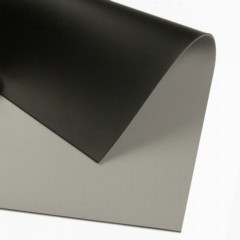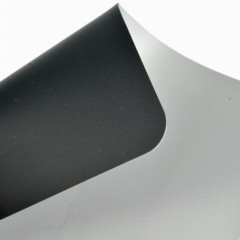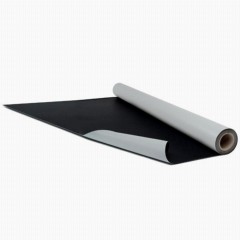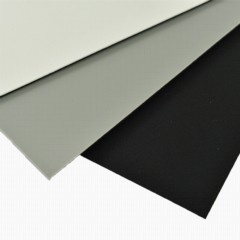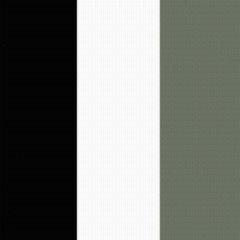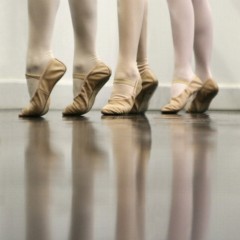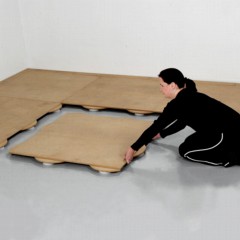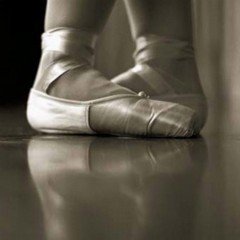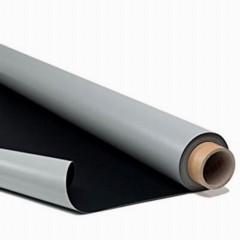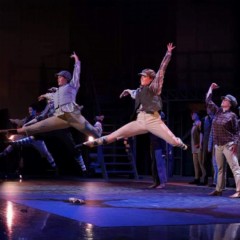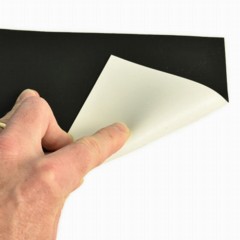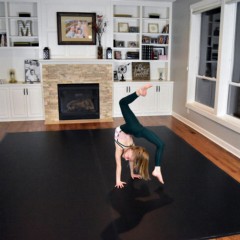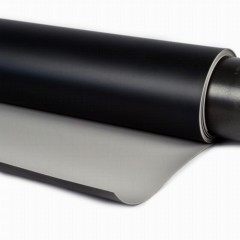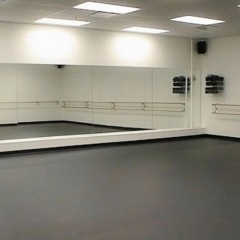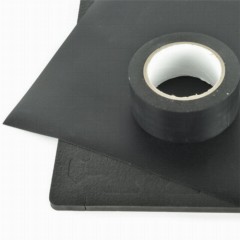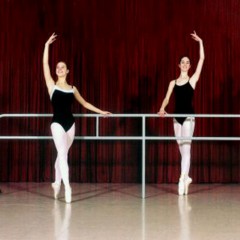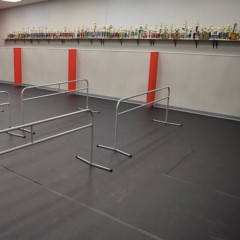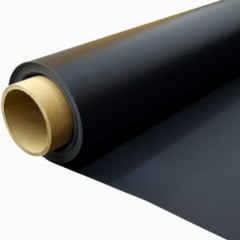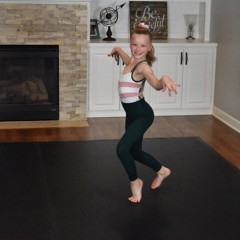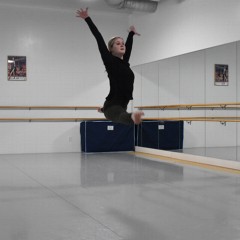Ballet Dance Flooring
-
$2,88050 /Roll You Save 9%$4.18/sqftShips Out in 1-3 Working DaysShop
-
$2,04900 /Roll You Save 15%$2.98/sqftShips Out in 1-3 Working DaysShop
-
$3,52849 /Roll You Save 5%$4.13/sqftShips Out in 4-6 Working DaysShop
-
$1885 /Linear Ft You Save 19%$3.59/sqftShips Out in 1-3 Working DaysShop
-
$3352 /Linear Ft You Save 4%$5.16/sqftShips Out in 4-6 Working DaysShop
-
$2,08565 /Roll You Save 10%$4.91/sqftShips Out in 1-3 Working DaysShop
-
$2,18900 /Roll You Save 17%$4.10/sqftShips Out in 1-3 Working DaysShop
-
$21446 /Each You Save 5%$17.51/sqftShips Out in 11-14 Working DaysShop
-

-
$1,51436 /Roll You Save 15%$4.21/sqftShips Out in 1-3 Working Days SustainableShop
-
$2800 /Linear Ft You Save 9%$5.33/sqftShips Out in 1-3 Working DaysShop
-
$1,77900 /Roll You Save 10%$3.33/sqftShips Out in 1-3 Working DaysShop
-
$1,98025 /Roll You Save 10%$2.88/sqftShips Out in 1-3 Working DaysShop
-
$44325 /Kit You Save 30%$4.18/sqftShips Out in 1-3 Working Days Free ShippingShop
-
$20522 /Roll You Save 21%$4.89/sqftShips Out in 1-3 Working Days Free ShippingShop
-
$20475 /Roll You Save 31%$3.90/sqftShips Out in 1-3 Working DaysShop
-
$97900 /Roll You Save 27%$2.27/sqftShop
-
$61050 /Kit You Save 24%$5.76/sqftShips Out in 1-3 Working Days Free ShippingShop
-
$69925 /Pack You Save 4%Ships Out in 1-3 Working Days Free ShippingShop
-
PortaBarre with Case 4 Inch x 3.7x9 Ft.
2 reviews
$90573 You Save 4%Ships Out in 1-3 Working DaysShop -
$15894 /Roll You Save 21%$5.05/sqftShips Out in 1-3 Working Days Free ShippingShop
-
$19800 /Roll You Save 44%$3.77/sqftShips Out in 1-3 Working DaysShop
-
$13950 /Roll You Save 22%$4.43/sqftShips Out in 1-3 Working DaysShop
-
$17949 /Roll You Save 23%$4.88/sqftShips Out in 1-3 Working DaysShop
-
$15133 /Roll You Save 21%$4.80/sqftShips Out in 1-3 Working DaysShop
Quality ballet flooring in custom cut lengths at afforadable prices.
Find quality marley ballet floor options for professional dance studios and home practice ballet floors. If you're looking for the best ballet floor for a dance studio, you've come to the right place. Greatmats ballet flooring options include quality marley dance flooring of professional quality and at affordable prices. And in most cases, you can even install it yourself.
A ballet dance floor needs to have the proper slip co-efficient for lightweight leather, canvas or satin shoes or slippers. It must be safe for pointe and free from seams or tripping hazards. A portable ballet floor must also be lightweight and compact enough for easy transportation.
Even with the best ballet flooring, you'll want to make sure you have the proper subfloor to reduce fatigue and injury. Greatmats offers an excellent selection of balance dance subfloor options to go over most existing surfaces and under quality marley vinyl.
A good marley dance floor can easy be installed for home ballet training when used in conjunction with a right subfloor. This includes installing your dance surface over wood, concrete or carpet bases. Pointe offers one of the biggest challenges in this department as it requires a impact absorption that offers a strong level of support and is not too squishy. Dancing pointe on floors that are too soft will impede the performance and possibly present new safety hazards.
One of Greatmats best flooring lines for ballet studio is the Rosco dance floor line. Built to professional quality standards, its stage and studio marley rolls offer excellent versatility at very competitive pricing.
Don't settle for cheap performance surfaces for your dancers when you can get professional caliber products for the same price at Greatmats.
Ballet floor products are available in a variety of configurations, meaning you can find just the right material for your academy. Most of Greatmats flooring products are made to serve as a DIY installation.
A ballet floor needs to support ballet slippers consisting of leather, canvas, or satin. The flooring needs to be safe for pointe, and it must be free from tripping hazards. You’ll want to reduce the number of seams in the ballet floor to limit the possibility of stumbling on a curled edge.
Whether you need a professional style floor that’s suitable for any kind of ballet performance, or a flooring that’s better for beginners looking to create a practice area at home, you can find multiple products.
For professional or amateur ballet company installations, a ballet floor may need to share the stage with theatre groups.
Look for a full roll vinyl material that can support weight of props used for musicals or plays, but that’s also appropriate as a flooring for the dancer to use for performances or practices.
A stage floor style is a nice choice for a school, where a stage area will be used for many different types of performances or even to hold a class.
A marley style flat floor is a versatile option for a studio that teaches all kinds of dance. This is the best ballet floor choice for studios that hold multiple dance classes, where students and dancers may alternate between using bare feet, slippers, and shoes.
Ballerinas like a marley floor, as it has a slip resistant surface. This allows the students to move properly without the worry of falling during a tough workout session or while learning new skills.
You can find marley rolls in a variety of pre-cut sizes. Large rolls are made to cover several hundred square feet of stage. However, you also can find smaller rolls that are made for use at home during a practice session.
Marley rolls often are reversible, featuring different colors on each side of the vinyl. This is a nice feature in areas where you’ll be using the flooring in theater settings. You can change the floor color to match the setting for the performance.
Count on the sprung dance floor product to absorb the impact from a dancer landing jumps and leaps, which is perfect for a variety of dance styles, including ballet.
The sprung floor consists of large panels that interlock tightly together using a nesting edge system. Around the edge of the island installation, you can use the included perimeter pieces to hold the entire flooring system together. The panels will not pull apart, even when dancers are placing them under stress.
In an area of a studio where you’ll be facing customers, a sprung floor can deliver a beauty to your studio that will impress. You’ll roll out a thin marley flooring over the top of the panels for the perfect finishing touch, creating a natural look in nearly any setting.
Beneath the wood surface on each panel, you’ll find thick closed cell foam pads that provide a cushioned landing area, while giving the dance students or professional dancers the stability they need to perform any kind of move.
If your ballet studio has a cement subfloor, you may want to create a bit of cushioning and a thermal barrier between the concrete and the dance floor surface. This is especially helpful when making use of a thin roll of ballet floor.
Some people will choose to make use of rubber mats to create this subfloor barrier. Plyometric rubber is available in a roll format, which simplifies installation over a large area.
Rubber provides thermal properties, helping guard against the cold cement floor. It also has a bit of impact absorption that creates a comfortable setting for practice.
Another option for a cushioned subfloor with even more thermal insulation is a foam mat with an interlocking edge. These ballet floor mats are lightweight, meaning you easily can take them with you wherever needed for a performance on the go. By having the foam tiles with you, you’ll be ready for any subfloor you encounter at an unfamiliar location for a performance.
The interlocking edges fit together tightly, ensuring a stable subsurface. Foam has a nice level of cushioning, which is perfect to use under the thin vinyl dance roll when not performing pointe work. Foam also is an economical choice as a subfloor barrier layer.
As a final touch, you may want to purchase portable barre structures to set up over the top of the ballet floor. This allows the athletes to perform their stretches comfortably before beginning practice. By selecting a portable barre, it can be moved out of the way after use to maximize the amount of space available for practicing.
To learn more about your floor options to use with ballet classes or dance practice, visit our buyer’s guide. We’ve included blog entries, installation ideas, product videos, and customer testimonials to help you pick the perfect material.
A ballet dance floor needs to have the proper slip co-efficient for lightweight leather, canvas or satin shoes or slippers. It must be safe for pointe and free from seams or tripping hazards. A portable ballet floor must also be lightweight and compact enough for easy transportation.
Even with the best ballet flooring, you'll want to make sure you have the proper subfloor to reduce fatigue and injury. Greatmats offers an excellent selection of balance dance subfloor options to go over most existing surfaces and under quality marley vinyl.
A good marley dance floor can easy be installed for home ballet training when used in conjunction with a right subfloor. This includes installing your dance surface over wood, concrete or carpet bases. Pointe offers one of the biggest challenges in this department as it requires a impact absorption that offers a strong level of support and is not too squishy. Dancing pointe on floors that are too soft will impede the performance and possibly present new safety hazards.
One of Greatmats best flooring lines for ballet studio is the Rosco dance floor line. Built to professional quality standards, its stage and studio marley rolls offer excellent versatility at very competitive pricing.
Don't settle for cheap performance surfaces for your dancers when you can get professional caliber products for the same price at Greatmats.
Ballet floor products are available in a variety of configurations, meaning you can find just the right material for your academy. Most of Greatmats flooring products are made to serve as a DIY installation.
A ballet floor needs to support ballet slippers consisting of leather, canvas, or satin. The flooring needs to be safe for pointe, and it must be free from tripping hazards. You’ll want to reduce the number of seams in the ballet floor to limit the possibility of stumbling on a curled edge.
Whether you need a professional style floor that’s suitable for any kind of ballet performance, or a flooring that’s better for beginners looking to create a practice area at home, you can find multiple products.
Ballet Stage Floor
For professional or amateur ballet company installations, a ballet floor may need to share the stage with theatre groups.
Look for a full roll vinyl material that can support weight of props used for musicals or plays, but that’s also appropriate as a flooring for the dancer to use for performances or practices.
A stage floor style is a nice choice for a school, where a stage area will be used for many different types of performances or even to hold a class.
Marley Floor
A marley style flat floor is a versatile option for a studio that teaches all kinds of dance. This is the best ballet floor choice for studios that hold multiple dance classes, where students and dancers may alternate between using bare feet, slippers, and shoes.
Ballerinas like a marley floor, as it has a slip resistant surface. This allows the students to move properly without the worry of falling during a tough workout session or while learning new skills.
You can find marley rolls in a variety of pre-cut sizes. Large rolls are made to cover several hundred square feet of stage. However, you also can find smaller rolls that are made for use at home during a practice session.
Marley rolls often are reversible, featuring different colors on each side of the vinyl. This is a nice feature in areas where you’ll be using the flooring in theater settings. You can change the floor color to match the setting for the performance.
Sprung Dance Floor
Count on the sprung dance floor product to absorb the impact from a dancer landing jumps and leaps, which is perfect for a variety of dance styles, including ballet.
The sprung floor consists of large panels that interlock tightly together using a nesting edge system. Around the edge of the island installation, you can use the included perimeter pieces to hold the entire flooring system together. The panels will not pull apart, even when dancers are placing them under stress.
In an area of a studio where you’ll be facing customers, a sprung floor can deliver a beauty to your studio that will impress. You’ll roll out a thin marley flooring over the top of the panels for the perfect finishing touch, creating a natural look in nearly any setting.
Beneath the wood surface on each panel, you’ll find thick closed cell foam pads that provide a cushioned landing area, while giving the dance students or professional dancers the stability they need to perform any kind of move.
Subfloor Ballet Mats & Rolls
If your ballet studio has a cement subfloor, you may want to create a bit of cushioning and a thermal barrier between the concrete and the dance floor surface. This is especially helpful when making use of a thin roll of ballet floor.
Some people will choose to make use of rubber mats to create this subfloor barrier. Plyometric rubber is available in a roll format, which simplifies installation over a large area.
Rubber provides thermal properties, helping guard against the cold cement floor. It also has a bit of impact absorption that creates a comfortable setting for practice.
Another option for a cushioned subfloor with even more thermal insulation is a foam mat with an interlocking edge. These ballet floor mats are lightweight, meaning you easily can take them with you wherever needed for a performance on the go. By having the foam tiles with you, you’ll be ready for any subfloor you encounter at an unfamiliar location for a performance.
The interlocking edges fit together tightly, ensuring a stable subsurface. Foam has a nice level of cushioning, which is perfect to use under the thin vinyl dance roll when not performing pointe work. Foam also is an economical choice as a subfloor barrier layer.
As a final touch, you may want to purchase portable barre structures to set up over the top of the ballet floor. This allows the athletes to perform their stretches comfortably before beginning practice. By selecting a portable barre, it can be moved out of the way after use to maximize the amount of space available for practicing.
To learn more about your floor options to use with ballet classes or dance practice, visit our buyer’s guide. We’ve included blog entries, installation ideas, product videos, and customer testimonials to help you pick the perfect material.
